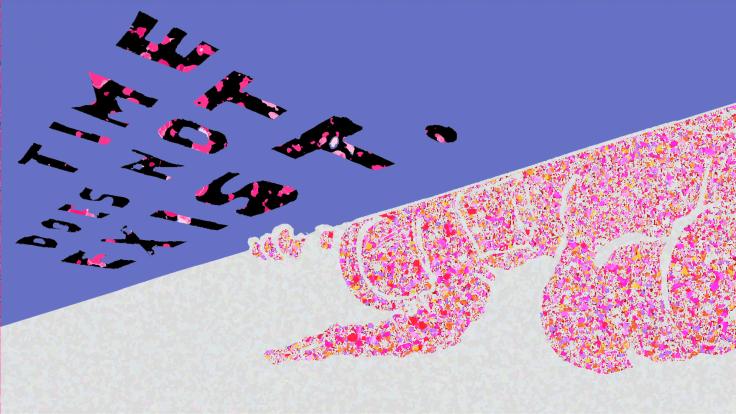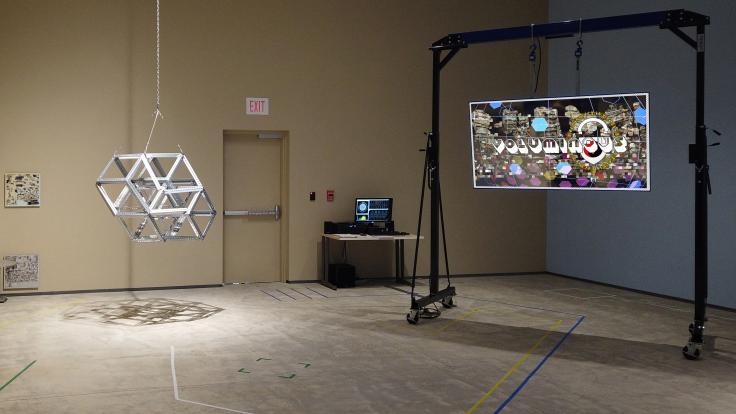Before Antoine Gittens-Jackson became the rapper known as Consensus, he was a teenager in the Lewisham area of South East London, rap-battling with his friends for fun. Though the borough has gentrified a bit since then, that wasn’t the case in the early 2000s. “The area I grew up in was rough, and rap kept me out of trouble,” he says. “I always saw rap as a vehicle for self-expression.”
When he enrolled in the University of Bristol, Consensus began to use music as an educational tool. An aeronautical engineering major, he wrote raps about sustainability while producing music for himself and others. “Hip hop, in its essence, is about conveying knowledge, the knowledge of the street,” he says. “But it could also be used to tell stories from a different lens.”
After college, he continued rapping and producing music while working part-time as a computer programmer. But a visit to CERN in Geneva with a fellow musician changed his life. The scientific experiments conducted at CERN—examining everything from subatomic particles to the understanding of the universe itself—inspired him to combine his deep knowledge of music with his knack for storytelling to write songs about science.
Now, nearly a decade later, he is known as a musician who has successfully used rap and hip-hop to engage new audiences in physics.
One of his latest releases, D.U.N.E. (Deep Underground), tells a story about the neutrinos traveling through space as part of the upcoming Deep Underground Neutrino Experiment, or DUNE. Even listeners who have no appreciation for the physics in the lyrics can appreciate the song’s futuristic vibe. “I can only now confidently say that I can rap about particle physics and people can bop their heads to it,” Consensus says. “After all this time, I can legit make a club tune about high-level particle physics.”
A fateful trip to CERN
The seeds of Consensus’s science tracks were planted in 2015, when he visited a fellow rapper in Geneva. At the time, Consensus had no idea what CERN was. The CMS detector at the Large Hadron Collider was closed down for repair, so the friend arranged for Consensus to visit and take a tour.
At CERN, Consensus met with Michael Hoch, a physicist and artist who ran the art@CMS program, who saw the potential for a partnership. “We needed creative people like Consensus to work with us,” says Hoch, who also founded the ORIGIN network of cross-disciplinary art and science collaborators. “He’s a musician, and he takes his music seriously, but he also started in engineering, so he has a deeper understanding of physics. He didn’t want to make something superficial. He wanted to dive in and really understand the fundamental scientific topics.”
Hoch paired him with physicist Sudan Paramesvaran, an associate professor at the University of Bristol, who showed him around the CMS experiment and answered his questions.
Consensus had gone in imagining he might find inspiration to write a single song. But “there I thought, ‘This is way more than one track,’” he says. “And that’s how it got started.”
Consensus began to dig deep into particle physics. For his part, Paramesvaran offered advice on the science of lyrics and demos. “He was keen to make sure that the science was correct and that the lyrics were based on something tangible,” Paramesvaran says.
Combining analogies with hip hop genres
The Standard Model, dark matter, the Higgs boson and antimatter each got their own tracks. Consensus both produced the music—sampling from UK drill, trap, grime, jungle and jazz—and wrote the words.
His lyrics may be based in the science, but his songs are more likely to take inspiration from physics concepts to talk about something else.
“I just find the songs so different than any other type of hip-hop music I know,” Paramesvaran says. “It’s so impressive how much time he puts into getting the science correct. You can listen to it as you drive in the car and have it seep in, so you can think about the science a bit more.”
Consensus has returned to CERN several more times to learn more about the scientific experiments, perform for staff, and to film a music video for his song Method to Madness.
Consensus released his first full physics-themed album, ConCERNED, in 2017.
Soon after, physicist and YouTuber Don Lincoln arranged for Consensus to give lectures and perform at the US Department of Energy’s Fermi National Accelerator Laboratory, and at a few universities around the United States. “When I think of science outreach, I don’t generally think of rap,” Lincoln says. “But if we wish to broaden our horizons both intellectually and demographically, we need to be creative.”
As he got more involved in outreach, Consensus became more than a rapper; he also became a teacher. With Hoch and Paramesvaran, he visited high schools around Europe and through the Ontario Science Centre in Canada to teach students the process of writing raps about physics. “When he spoke to the classes, the kids were hanging on his every word,” Hoch says.
In some classes, kids answered questions about the science they learned from the songs. In others, students made their own STEM-themed rap videos, an experience Consensus calls “powerful.” He says, “Seeing these kids singing and dancing along to physics songs—that’s what makes it worth it.”
Asking the big questions
In 2019, Consensus applied for and received a Science and Technology Facilities Council grant to create a second STEM-focused album. Throughout the pandemic and into 2023, he created 14 new tracks along the theme of “origins of the universe” as part of a new album called ConScience.
He collaborated with musicians and producers across genres while tapping into new scientific expertise. For his Gravitational Waves track, for example, he turned to the expertise of Martin Hendry, a physicist who works on the LIGO scientific collaboration, as well as famous jazz musician Theon Cross.
For the track focused on DUNE, Consensus again worked with Paramesvaran (their series of conversations is available on YouTube). The song’s electronic synth music is meant to sound futuristic and give listeners the feeling of being underground. The lyrics are a narrative of the neutrinos as they travel and collide with liquid argon–-though they could also be interpreted in a different way, as being about someone trying to avoid scrutiny.
As he finishes up the full album, Consensus considers the innumerable physics facts he has learned since that first fateful trip to CERN. One of his favorites: that the only way to separate quarks and gluons is to create quark-gluon plasma. He used that as the basis for his track Unbreakable, a love song.
Another favorite: that the universe is expanding like a stretching grid. “Some of this stuff I had to read several times before I got it, since it’s nothing like anything we observe on Earth,” he says.
This year, Consensus has taken another step into the outreach side of things: He’s working on educational materials that high school teachers can use to educate students about the STEM concepts he references in his songs.
And though he has no plans to create another STEM-focused album, he remains part of Hoch’s ORIGIN network. Hoch still presents about Consensus in his talks and hopes to continue to find more opportunities for him to present his art.
“He’s sharing his work with the world, and even if he is not a scientist, he participates in our collaboration,” Hoch says. “If we want to have an impact by combining art and science, we need to engage artists like Consensus who are willing to collaborate with us to bring this interdisciplinary dialogue to the next generation.”












